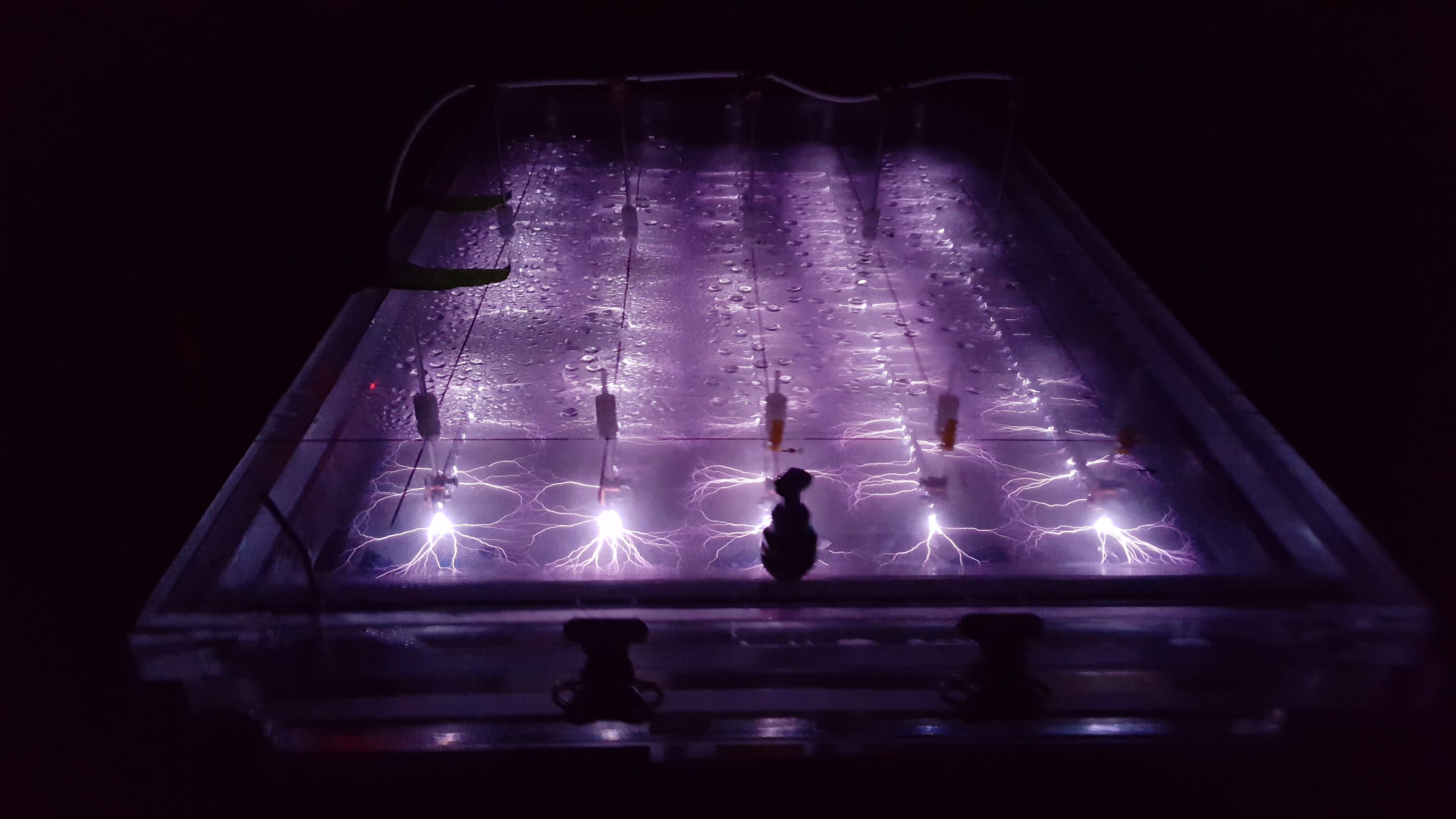As a Pentagon task force works to come up with a plan to address cancer-linked chemicals in ground water on its bases, a group of civilian researchers is exploring a high-tech solution.
The Enhanced Contact Plasma Reactor made its debut in September at Wright-Patterson Air Force Base, Ohio, according to a Tuesday release from the Air Force, in a field demonstration of its ability to break down per- and polyfluoroalkyl substance.
“We are trying to destroy or degrade PFAS impacted groundwater using electrical discharge plasma,” principal investigator Selma Mededovic, of Clarkson University, said in the release.
The idea is that argon gas from the reactor concentrates perfluorooctane sulfonate and perfluorooctanoic acid, known as PFOS and PFOA, generating plasma at the surface. The plasma then breaks down the PFAS molecules.
"This is the only technology that actually destroys PFAS molecules that has been demonstrated at this scale, it doesn’t just remove them from water,” co-principal investigator Tom Holsen said in the release. “All of the other demonstrations that we’re aware of remove it from the water through filtration so there is still a PFAS-containing waste. Our method actually destroys PFAS.”
Over the course of two weeks, contracted researchers from Clarkson and GSI Environmental pulled hundreds of gallons of groundwater, running the reactor with different time periods and amounts of water to find the best settings.
Whether the reactor can be scaled across the military remains to be seen, according to the release, as the researchers evaluate the treated water samples.
The chemicals, found in everything from fabric, carpet, cookware and food packaging, are of particular concern on military bases, where they are a key ingredient in the fire-fighting foam used to put out blazes after an aircraft or vehicle incident.
Though the services no longer use the foam in training, where it was most commonly deployed for decades, the compounds do not break down, and so risk building up not only in groundwater, but in the human body.
RELATED

Filtration systems have brought base contamination levels down to Environmental Protection Agency standards, but organizations like the Environmental Working Group have argued that those levels are still too high.
“PFOS/PFOA is a national issue, and research like this could lead to the breakthroughs we need to address potential contamination,” Mark Correll, Deputy Assistant Air Force Secretary for installations, energy and the environment," said in the release.
Defense Secretary Mark Esper stood up a task force in July to make recommendations on combating the issue. The group meets monthly to discuss its ongoing research, with a January deadline for submitting final findings.
Meghann Myers is the Pentagon bureau chief at Military Times. She covers operations, policy, personnel, leadership and other issues affecting service members.





